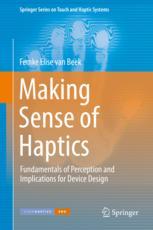

Most ebook files are in PDF format, so you can easily read them using various software such as Foxit Reader or directly on the Google Chrome browser.
Some ebook files are released by publishers in other formats such as .awz, .mobi, .epub, .fb2, etc. You may need to install specific software to read these formats on mobile/PC, such as Calibre.
Please read the tutorial at this link: https://ebookbell.com/faq
We offer FREE conversion to the popular formats you request; however, this may take some time. Therefore, right after payment, please email us, and we will try to provide the service as quickly as possible.
For some exceptional file formats or broken links (if any), please refrain from opening any disputes. Instead, email us first, and we will try to assist within a maximum of 6 hours.
EbookBell Team

5.0
68 reviewsTele operation systems, in which robots are controlled remotely, are a potential solution to performing tasks in remote, small, and hazardous environments. However, there is a big disadvantage to these systems; as the direct connection between the human and the environment is lost and operators are deprived of their sense of touch. The recreation of touch feedback through haptic devices is a possible solution, however haptic devices are far from perfect and improving their design is usually a slow trial-and-error process.
This book describes 7 scientific studies that try to break this slow loop by using a deductive approach. Through investigating fundamental properties of human haptic perception using psychophysical paradigms, general knowledge on haptic perception of force, position, movement and hardness was gained. The resulting information can be applied to many different haptic devices. Consequently haptic systems can be more easily designed in an intuitive, human-centered way.